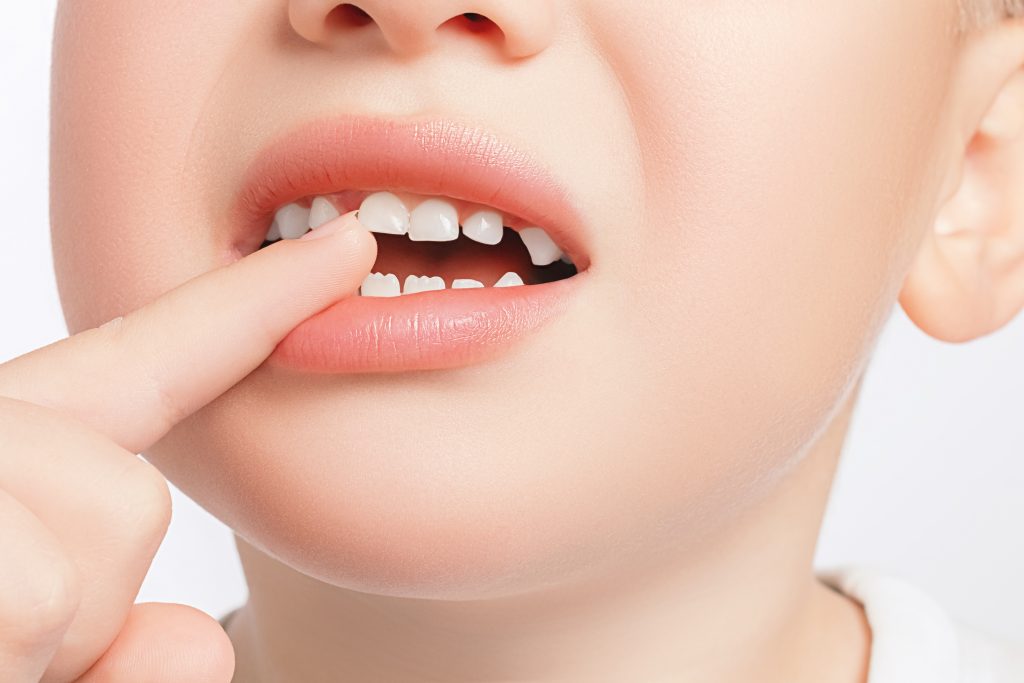As parents, we all eagerly anticipate those precious moments when our children’s baby teeth start to make way for their permanent ones. It’s a significant milestone in their growth and development. However, as those tiny teeth become wobbly and loose, the question arises: How to pull baby teeth? In this article, we’ll explore the process of baby teeth falling out, when it’s appropriate to lend a helping hand and the safest methods for doing so.
Understanding the Natural Process
When permanent or “adult” teeth begin to emerge, the baby teeth prepare to vacate the premises. This natural process occurs as the permanent teeth take over the roots of their baby counterparts. Consequently, the baby’s teeth gradually loosen until they eventually fall out. This fascinating transition usually begins around the age of 6 when most children embark on the journey of losing their first baby teeth. Typically, the front teeth are the first to bid farewell, while molars, those larger teeth situated at the back of the mouth, tend to follow suit between the ages of 10 and 12.
When Is It Good to Pull Baby Teeth?
Many baby teeth make their exit without any external assistance. Children often take matters into their own hands, using their fingers or tongue to expedite the process. However, if your child has a barely-hanging tooth that’s causing discomfort or anxiety, you might consider intervening. Here are some guidelines to determine when it’s acceptable to help your child pull a loose tooth:
It’s Probably OK to Remove the Tooth If:
- The tooth is very loose, barely hanging on by a small piece of tissue
- It has loosened naturally, not due to a dental issue or accident
- Your child is nearly 6 years old or older
It’s Not OK to Pull a Tooth If:
- The tooth is barely loose, even if it has been that way for some time. Pulling such a tooth can lead to unnecessary bleeding and pain
- Your child has recently experienced an accident or dental problem that caused the tooth to become loose
- Your child is under the age of 5, as prematurely extracted baby teeth can result in future dental issues like crooked teeth
If you are uncertain whether it’s appropriate to help your child pull a loose tooth, it’s always a good idea to consult your dentist for professional guidance.
How to Pull Baby Teeth?: Best Way to Remove Baby Teeth?
While it’s generally advisable to allow baby teeth to fall out naturally or let your child handle the process, there are safe methods to assist when necessary. Here’s a step-by-step guide on how to do it:
- Numb the Area: If your child is concerned about pain, put a clean ice pack on the gum near the tooth
- Use a Clean Tissue or Gauze: With a clean tissue, gauze, or a piece of paper towel, grip the tooth gently but firmly
- Twist and Remove: Swiftly and gently twist the tooth until it comes out. Remember, excessive twisting or tugging can lead to discomfort and complications
What Not to Do When Pulling Baby Teeth:
- String Tying: Do not attempt to tie a string around the tooth to pull it out. This method is unsafe and can cause pain and other complications
- Prolonged Twisting: If the tooth resists removal and requires more than a couple of twists, it may not be ready to come out. Avoid persistent twisting, and consult your dentist if necessary
- Discomfort: If your child experiences pain during the process, cease any further attempts immediately and seek professional dental assistance
When Should Your Child See the Dentist?
While most cases of baby teeth falling out are entirely normal, there are instances when involving a dentist is crucial. Schedule a visit to the dentist if your child:
- Has a baby tooth that remains slightly loose without further loosening or falling out for six months or more
- They have lost most of their baby teeth, but one or more teeth are reluctant to make their exit. In such cases, the dentist might need to remove the stubborn tooth
- Experiences pain or exhibits signs of infection, such as swollen gums or discomfort, associated with a loose tooth
- Has a loose tooth due to an accident or dental trauma
Final Words: How to Pull Baby Teeth?
In conclusion, the process of baby teeth falling out is a natural part of a child’s development, signifying their transition into the world of permanent teeth. While most baby teeth will shed on their own or with a little wiggling from your child, there are circumstances when assistance may be required. Always exercise caution, use safe methods, and consult your dentist when in doubt. By following these guidelines, you can ensure that your child’s journey from baby to permanent teeth is smooth and pain-free.




